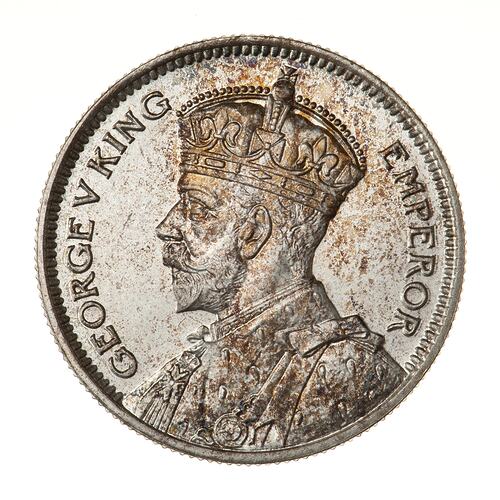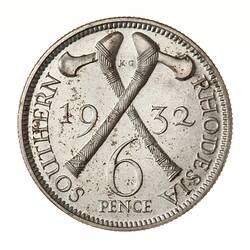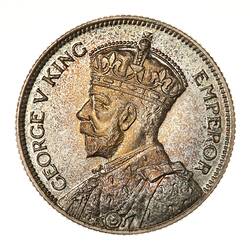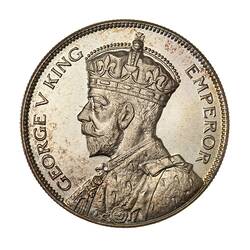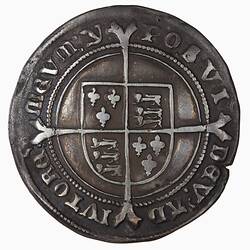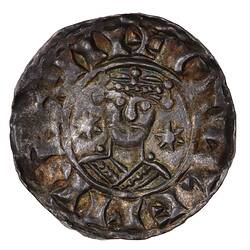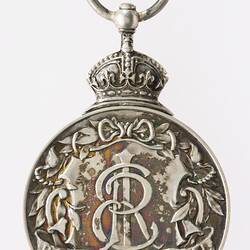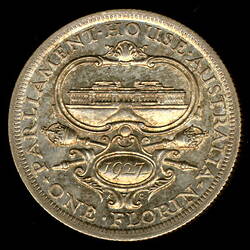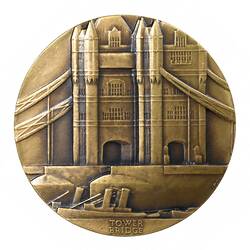Summary
Proof 6 Pence, Issued by Southern Rhodesia (Zimbabwe), 1932
Minted by Royal Mint, London
Obverse Description
Crowned bust of the King facing left, the bust extends to the edge of the coin; around, GEORGE V KING EMPEROR
Reverse Description
Two Matabili axes arranged saltirewise dividing the date 1932; below, 6 / PENCE; around, SOUTHERN RHODESIA; artist's initials, KG, between axe heads
Edge Description
Milled
Significance
From 1923, when the Union of South Africa introduced its own coinage, British Imperial coinage and coins of South Africa served side by side as the legally sanction coinage of Southern Rhodesia. In 1931 the use of the gold standard was suspended in Britain and Southern Rhodesia but not South Africa. The value of British Imperial coins dropped relative to gold while the coins of South African origin remained steady. As a result the South African coins in circulation in Southern Rhodesia became more valuable and were withdrawn by individuals, some for hoarding and some returned to South Africa, there to purchase gold. The difference in value was about 33% so the impact was severe. Southern Rhodesia enacted the Coinage Act 1932 authorising a local coinage.
George Kruger Gray, who had designed the Arms for Southern Rhodesia in 1924, was selected to design the new coinage. The Annual Report of the Royal Mint (1932, p.5) records that he "chose motifs therefrom for the three larger coins. Thus the Halfcrown shows the Shield of Arms surmounted by the Royal Crown; the Florin the Sable Antelope at the alert; the Shilling bears the Crest from the Arms - the Bird from the carving in soapstone discovered iat Great Zimbabwe. The smaller coins have as their principal features native implements, the Sixpence two Matabili axes arranged saltirewise, and the Threepence three spearheads".
The coins were proclaimed legal tender by the Governor on 25 November 1932.
More Information
-
Collecting Areas
-
Acquisition Information
Transfer from Melbourne Branch of Royal Mint, 1978
-
Date Issued
1932 AD
-
Issued By
-
Mint
-
Artist
-
Artist
Percy Metcalfe CVO - Royal Mint, London, Great Britain, 1932
-
Denomination
-
Series
-
Material
Silver
-
Axis
12
-
Classification
-
Category
-
Discipline
-
Type of item
-
Dimensions
20 mm (Outside Diameter), 2.838 g (Weight)
-
Shape
Round
-
References
KM#2
[Book] Bruce, Colin R. 2009. 2009 Standard Catalogue of World Coins 1901 - 2000.
-
Keywords
